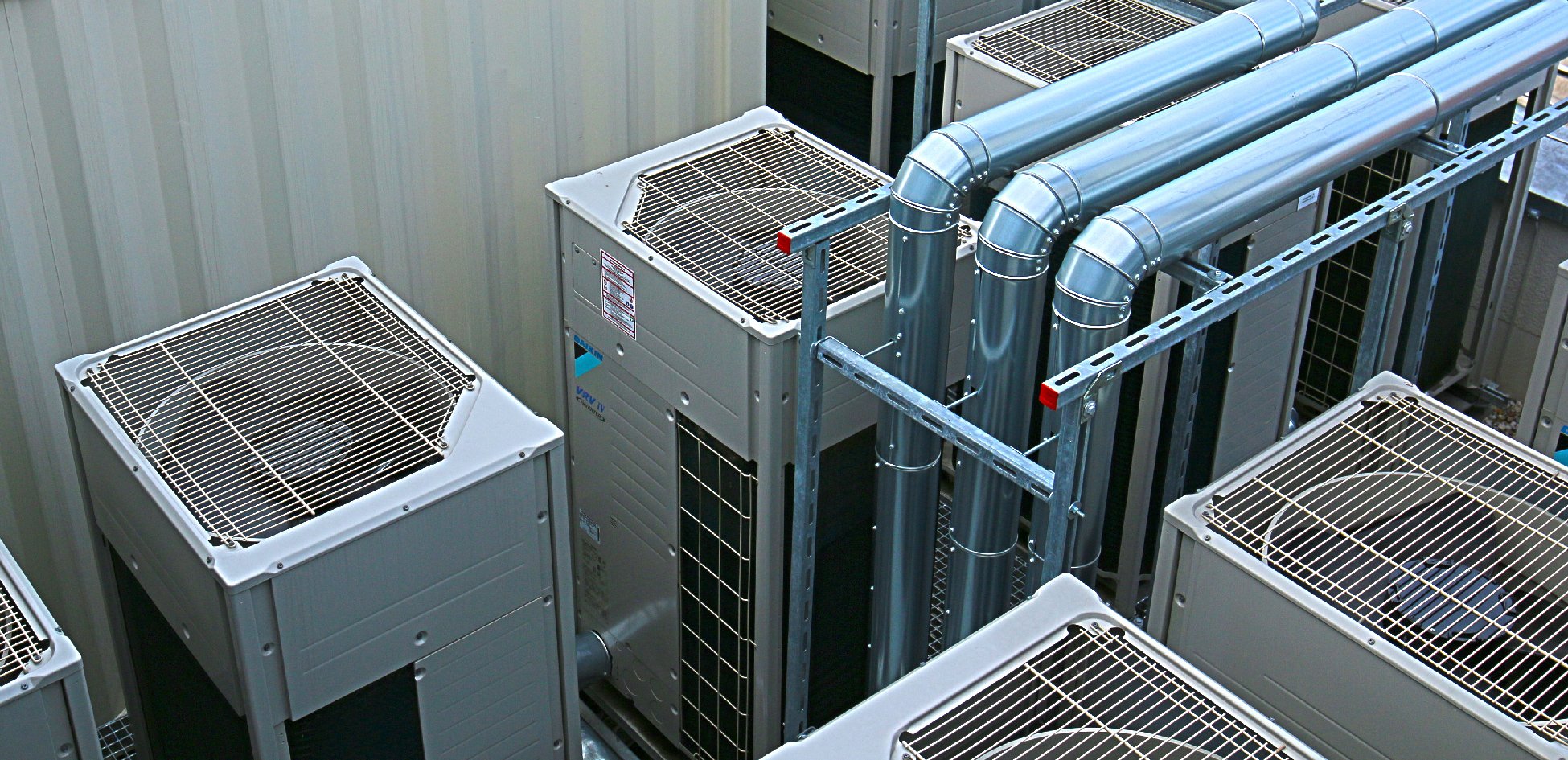Types of Commercial Air Conditioning Systems
Air Conditioning System: Definition, Functions, Components
Types of Commercial Air Conditioning Systems
In the dynamic world of commercial spaces, maintaining a comfortable environment is crucial for productivity and customer satisfaction. Choosing the right air conditioning system is a decision that directly impacts both. Let's dive into the diverse world of commercial air conditioning systems to understand their features, benefits, and applications.
1. Introduction
Commercial air conditioning is not a one-size-fits-all solution. The right system depends on the specific needs of the space, considering factors such as size, usage, and environmental conditions. Making an informed decision is key to ensuring optimal comfort and energy efficiency.
2. Split System Air Conditioners
Split systems are the most common type of commercial air conditioners. They consist of two main components: an indoor unit that handles the air and an outdoor unit that manages the refrigerant. While cost-effective and versatile, they may not be suitable for larger spaces due to limited capacity.
3. Packaged Air Conditioning Systems
Ideal for larger commercial spaces, packaged systems house all components in a single unit. They are efficient and require less space for installation. These systems are commonly found in offices, retail stores, and restaurants.
4. Variable Refrigerant Flow (VRF) Systems
VRF systems offer a flexible solution, allowing different indoor units to operate at varying temperatures simultaneously. This makes them suitable for spaces with diverse cooling needs, providing energy-efficient climate control.
5. Chilled Water Systems
Chilled water systems use water as a cooling medium, circulating it through pipes to control indoor temperatures. Commonly employed in large commercial buildings, these systems are energy-efficient and provide consistent cooling.
6. Ductless Mini-Split Systems
These systems offer flexibility by allowing individual control over each indoor unit. Ductless mini-split systems are suitable for spaces where ductwork is impractical, providing efficient cooling without the need for extensive installation.
7. Hybrid Air Conditioning Systems
Hybrid systems combine traditional heating and cooling methods with renewable energy sources. They are known for their energy efficiency and cost savings, making them a sustainable choice for environmentally conscious businesses.
8. Geothermal Heat Pumps
Harnessing the Earth's constant temperature, geothermal heat pumps provide efficient heating and cooling. While installation costs may be higher, businesses benefit from lower operational costs and reduced environmental impact.
9. Evaporative Cooling Systems
In arid climates, evaporative cooling systems offer an energy-efficient alternative. By using the natural process of water evaporation, these systems cool the air without the need for refrigerants.
10. Choosing the Right System for Your Business
Selecting the appropriate commercial air conditioning system involves considering factors such as the size of the space, local climate, and budget constraints. Consulting with HVAC professionals ensures a tailored solution that meets specific requirements.
11. Maintenance Tips for Commercial Air Conditioning Systems
Regular maintenance is crucial for the longevity and efficiency of commercial air conditioning systems. Business owners can perform simple tasks such as cleaning filters and coils, while professional services should handle more complex maintenance procedures.
12. Energy Efficiency Ratings
Understanding energy efficiency ratings, such as SEER (Seasonal Energy Efficiency Ratio), EER (Energy Efficiency Ratio), and COP (Coefficient of Performance), is essential for making informed decisions. Higher ratings indicate better energy efficiency, leading to reduced operational costs.
13. Technological Advances in Commercial Air Conditioning
Advancements in technology have introduced smart features and automation to commercial air conditioning systems. Integration with building management systems allows for precise control and monitoring, optimizing energy usage.
14. Common Issues and Troubleshooting
Being aware of common issues, such as refrigerant leaks, thermostat malfunctions, and airflow problems, enables businesses to address problems promptly. Quick troubleshooting can prevent downtime and ensure uninterrupted comfort.
15. Conclusion
In conclusion, the world of commercial air conditioning offers a variety of options to suit diverse needs. From traditional split systems to cutting-edge smart technologies, businesses can find the perfect solution. By understanding the features and benefits of each type, informed decisions can be made to create comfortable and efficient commercial spaces.
Frequently Asked Questions
- What factors should I consider when choosing a commercial air conditioning system?
- Consider the size of the space, local climate, budget constraints, and the specific cooling needs of the business.
- How often should I schedule professional maintenance for my commercial air conditioning system?
- Professional maintenance should be scheduled at least twice a year, ideally before the cooling and heating seasons.
- Are hybrid air conditioning systems suitable for all types of businesses?
- Hybrid systems are versatile and can be adapted to various businesses, but a consultation with HVAC professionals is recommended for tailored advice.
- What are the common signs of a malfunctioning commercial air conditioning system?
- Signs include uneven cooling, strange noises, increased energy bills, and inconsistent airflow.
- Can I install a ductless mini-split system in an existing commercial building without ductwork?
- Yes, ductless mini-split systems are designed for easy installation in existing buildings without the need for ductwork.





Comments
Post a Comment